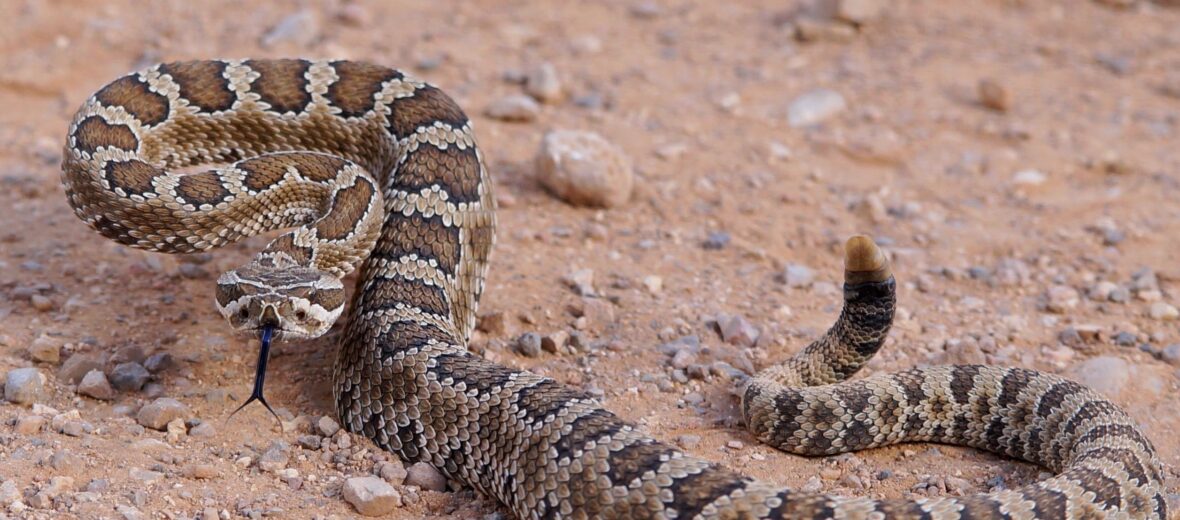
The great basin rattlesnake is a smaller species of venomous pit viper which dwells in California, Idaho, Nevada, Oregon, Utah, and Wyoming. They are a subspecies of the western, aka prairie rattlesnake. Due to a lack of major threats and a stable population these vipers are listed as Least Concern by the IUCN.
First the Stats…
Scientific name: Crotalus oreganus lutosus
Weight: Up to 1 lb.
Length: Up to 3.3 feet
Lifespan: Up to 15+ years
Now on to the Facts!
1.) These snakes were first formally named by Laurence Monroe Klauber in 1930.
2.) A special characteristic of these snakes is the fact that they have up to 3 internasal scales (scales that surround their nostrils).
3.) They prefer dry and barren habitats of the Great Basin region, typically found on summits, hills, and old lake benches. Great basin rattlesnakes like rocks, buttes, boulders on hillsides, low foothills, mountainsides, open deserts, alfalfa fields, and valley floors with a southern exposure.
4.) Amphibians, reptiles, birds, bird eggs, mice, rats, and gophers are all on the menu.
5.) Great basin rattlesnakes are viviparous (give live birth).
But wait, there’s more on the great basin rattlesnake!
6.) Females birth up to 10 snakelets.
7.) These snakes are a protected species in Utah.
Did you know…?
They are often confused with gopher snakes, but these pit vipers have a wider head and narrower neck.They also don’t get nearly as long as a gopher snake.
8.) Great basins are nocturnal (active at night).
9.) Their venom causes damage to the muscles resulting in their eventual breakdown, which is known as rhabdomyolysis. Extensive muscle breakdown can lead to a host of complications like kidney failure, severe shock, and potential death.
10.) Roadrunners, hawks, owls, and king snakes all prey on these vipers.
Now a Short Great Basin Rattlesnake Video!
Be sure to share & comment below! Also, check out the Critter Science YouTube channel. Videos added regularly!
Want to suggest a critter for me to write about? Let me know here.
Some source material acquired from: Wikipedia & IUCN
Photo credit: Nevada Department of Wildlife



